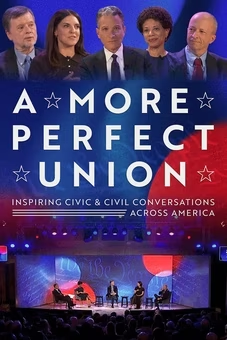
Would a lower legal limit for drunk driving improve safety?
Clip: 12/7/2024 | 5m 38sVideo has Closed Captions
Drunk driving in the U.S. rose in recent years. Would a lower legal limit improve safety?
According to the National Highway Traffic Safety Administration data, drunk driving crashes are as much as 40 percent higher between Thanksgiving and New Year’s Day than the rest of the year. The legal blood alcohol limit in the U.S. is higher than around the world, and advocates say lowering it would reduce fatal car crashes. John Yang speaks with researcher James Fell to learn more.
Problems playing video? | Closed Captioning Feedback
Problems playing video? | Closed Captioning Feedback
Major corporate funding for the PBS News Hour is provided by BDO, BNSF, Consumer Cellular, American Cruise Lines, and Raymond James. Funding for the PBS NewsHour Weekend is provided by...

Would a lower legal limit for drunk driving improve safety?
Clip: 12/7/2024 | 5m 38sVideo has Closed Captions
According to the National Highway Traffic Safety Administration data, drunk driving crashes are as much as 40 percent higher between Thanksgiving and New Year’s Day than the rest of the year. The legal blood alcohol limit in the U.S. is higher than around the world, and advocates say lowering it would reduce fatal car crashes. John Yang speaks with researcher James Fell to learn more.
Problems playing video? | Closed Captioning Feedback
How to Watch PBS News Hour
PBS News Hour is available to stream on pbs.org and the free PBS App, available on iPhone, Apple TV, Android TV, Android smartphones, Amazon Fire TV, Amazon Fire Tablet, Roku, Samsung Smart TV, and Vizio.
Providing Support for PBS.org
Learn Moreabout PBS online sponsorshipJOHN YANG: The holiday season means holiday parties, and that raises concerns about driving after having too much to drink.
According to National Highway Traffic Safety Administration data, drunk driving crashes are as much as 40 percent higher between Thanksgiving and New Year's Day than they are the rest of the year.
In 2000, Congress effectively set what's become the nationwide legal blood alcohol limit for drunk driving.
It's higher than it is around the world, and advocates say lowering it would reduce US fatal car crashes.
James Fell is a principal research scientist at NORC at the University of Chicago, which is a social research organization.
Mr. Fell, you've been studying impaired driving for about 50 years now, I think.
JAMES FELL, University of Chicago: Well over 50.
JOHN YANG: What has drunk driving done over that period?
Has it gone up?
Has it gone down?
JAMES FELL: Well, it went down between 1982 and 1997, when a lot of laws were being passed.
We lowered the limit to 0.08.
We had administrative license revocation, things like that.
It worked.
But then in '97, we hit a plateau, and now it's gone up.
during the pandemic.
I never would have thought that because, you know, you figure the travel is lower and the fatalities would go down.
But it went up.
It went up in 2020, '21, and '22, '23.
It looks like it's leveling off now, but there's been an increase in impaired driving, and it's mainly due to lack of enforcement.
JOHN YANG: Now, the legal limit in the United States, in most of the states in the United States is 0.08 blood alcohol content.
JAMES FELL: Right.
JOHN YANG: And most of the rest of the world, it's 0.05.
How did that come about?
How did the US limit come about, and how did the difference come about?
JAMES FELL: Actually, the limit back in the 50s and 60s was 0.15.
That's what the American Medical Association recommended.
So were high for a while, then we lowered it to 0.10.
Then in the 1980s, beginning in '83, states started on their own, started lowering it to 0.08.
And then there was the federal sanction, the incentive for all the states to do that.
JOHN YANG: And that sanction was the Congress said they couldn't get federal highway money unless.
JAMES FELL: It was a percentage of the money.
JOHN YANG: So 0.08 and 0.05.
I think a lot of people hear those numbers, but they don't really know what it means.
I don't know what it means.
Can you quantify it into how many drinks the average person would have or what level of impairment at each level?
JAMES FELL: Everybody's different and it doesn't work for everybody.
But in general, after we've done the studies, 0.05 would be a 170 pound male would have to have four drinks in two hours on an empty stomach to exceed.05.
137 pound female would need three drinks over two hours on an empty stomach.
Now if you're eating, your blood alcohol is lower because it absorbs some of the alcohol.
If you're at a party and you're not eating and you drink over a two hour period, don't exceed those because that's going to be illegal hopefully from every state soon.
JOHN YANG: The advocates who want to lower it in the United States is actually a real world example of the effects of that.
Utah.
Tell us about that.
JAMES FELL: Utah.
Just amazing.
Utah starts out with the lowest drunk driving rate in the nation.
When I saw that they were going to go to .05, I thought well, great, but we're not going to see much of an effect because they're low to begin with.
In the first year of that law, a 20 percent decrease in their traffic fatality rate.
And the rest of the nation, the other 49 states had a decrease of 5.6 percent.
And people said that they changed their behavior.
They heard about the law, obviously it was publicized and they said they changed their behavior.
They used alternative transportation.
JOHN YANG: So with those results, lowering it is backed by the National Transportation Safety Board, by advocacy groups.
JAMES FELL: Every public health.
JOHN YANG: So why hasn't it happened?
JAMES FELL: I don't know why it's not happening.
It's been introduced in about 10 states.
It only passed in Utah.
The science behind it is very strong.
63 percent of the public supports lowering it.
2.05 and it won't cost the state a thing.
And in the US that would mean saving 1,800 lives a year if all states went to.05.
JOHN YANG: Are there other ways to address drunk driving other than bringing the blood alcohol limit down?
JAMES FELL: Sure, there are several things that work.
The enforcement strategy using sobriety checkpoints, for example, where the police stop every car or every other car and they just talk to the driver and if they smell alcohol or notice the driver slurring his words or whatever, they pull them over and give them a field test.
That is a big general deterrent.
People do not want to get caught in a checkpoint.
It's very difficult to get police to do them.
Frequently, though, they have to be done at least once a week to have a big effect.
Another one is alcohol ignition interlocks for convicted offenders that prevents repeating the offense.
They won't be able to drink and drive.
They have to blow into a breathalyzer.
And if they have pretty much any positive alcohol, the car won't start.
So that's very effective also.
JOHN YANG: James Fell, thank you very much.
JAMES FELL: Thank you for having me.
Christmas tree farm overcomes Hurricane Helene’s destruction
Video has Closed Captions
Clip: 12/7/2024 | 4m 48s | How a Christmas tree farm in North Carolina overcame Hurricane Helene’s destruction (4m 48s)
Trump returns to the world stage at Notre Dame’s reopening
Video has Closed Captions
Clip: 12/7/2024 | 7m 50s | Notre Dame’s ceremonial reopening also marks Trump’s return to the world stage (7m 50s)
Providing Support for PBS.org
Learn Moreabout PBS online sponsorship
- News and Public Affairs

FRONTLINE is investigative journalism that questions, explains and changes our world.

- News and Public Affairs

Amanpour and Company features conversations with leaders and decision makers.
Urban Consulate Presents











Support for PBS provided by:
Major corporate funding for the PBS News Hour is provided by BDO, BNSF, Consumer Cellular, American Cruise Lines, and Raymond James. Funding for the PBS NewsHour Weekend is provided by...

